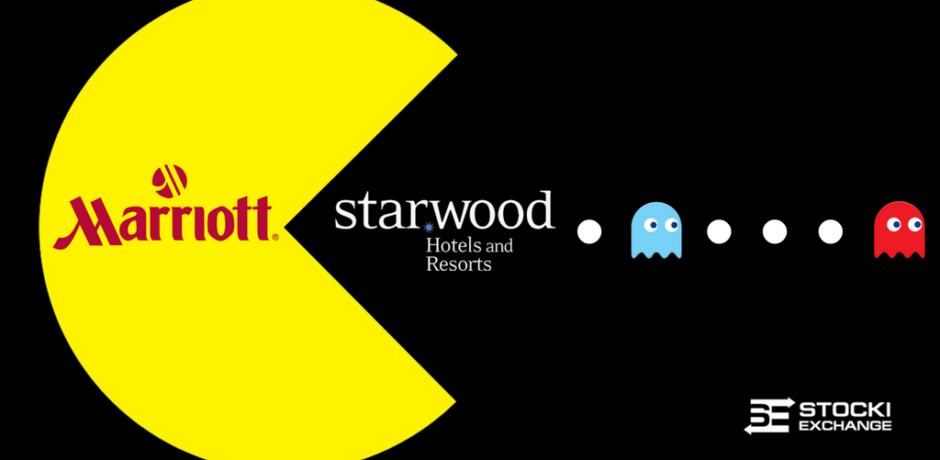Our Blog
Marriott International’s (MI) recent purchase of Starwood Hotels & Resorts Worldwide for $12.2 Billion dollars, makes it the largest hotel chain in the world. MI now controls 30 different brands, almost 5,800 properties and 1.1 million rooms in more than 110 countries worldwide. That’s more than 1 out of every 15 hotel rooms in the world per the Los Angeles Times.
Marriott controlled brands now include: Bulgari Hotels and Resorts, The Ritz-Carlton and The Ritz-Carlton Reserve, St. Regis, W, EDITION, JW Marriott, The Luxury Collection, Marriott Hotels, Westin, Le Méridien, Renaissance Hotels, Sheraton, Delta Hotels by MarriottSM, Marriott Executive Apartments, Marriott Vacation Club, Autograph Collection Hotels, Tribute Portfolio, Design Hotels, Gaylord Hotels, Courtyard, Four Points by Sheraton, SpringHill Suites, Fairfield Inn & Suites, Residence Inn, TownePlace Suites, AC Hotels by Marriott, Aloft, Element, Moxy Hotels, and Protea Hotels by Marriott.
Marriott now trumps both Hilton’s 773,000 and IHG’s 766,000 rooms, according to STR. The integration of both companies loyalty programs, Marriott Rewards and Starwood Preferred Guests, was a “central, strategic rationale for the transaction” according to Marriott CEO, Arne Sorenson, during a recent interview with the Associated Press.
Starwood put itself up for sale in April 2015. The Stamford, Connecticut, company had struggled to grow as fast as its rivals, particularly in “limited service hotels,” which are smaller properties which don’t have restaurants or banquet halls. They are often located on the side of the highway, near airports or in suburban office parks.
To acquire Starwood Hotels & Resorts Worldwide, Marriott International had to outbid China’s Anbang Insurance Group
What does this mean for Loyalty Program Members?
For now, Starwood and Marriott will maintain separate loyalty programs due to competitive partnerships the two have in place. Starwood has a credit card deal with American Express as well as close partnerships with Delta Air Lines and Uber. Marriott has a much larger program that includes partnerships with Chase bank and United Airlines. “We have to see how those partnerships evolve,” said Sorenson.
However, members of Starwood and Marriott’s loyalty programs will be able to link their accounts together. Gold Elite members in one program will get Gold status in the other. Platinum Elite members will get Platinum in the other. Marriott Silver members will see Starwood’s lowest category, Preferred Plus.
Marriott Rewards members now have access to 1,300 more properties around the world. In maintaining the exception service Starwood’s members were accustomed to, members can now convert their points to Marriott points at a 3:1 ratio.
What does this mean for Marriott International?
This merger represents a huge opportunity for Marriott. They have an unprecedented leverage over the markets they’re in due to the size and diversity of their brand portfolio. They have brands covering every niche as well as the resources to easily rebrand and renovate properties if needed to ensure market fit.
“We’ve got an ability to offer just that much more choice. A choice in locations, a choice in the kind of hotel, a choice in the amount a customer needs to spend,” said Sorenson. He also mentioned that he believes all 30 of the brands now under the Marriott umbrella will remain intact.
While more traditional takeover models have included immediately rebranding properties to promote the acquirer, Marriott has taken a savvier approach. Maintaining a unique look and feel for each brand in their portfolio creates broad consumer appeal without looking like the 800 pound gorilla in the marketplace.
What remains to be seen is whether or not consumer sentiment towards the behemoth will change now that they’re the biggest kid on the playground. I believe that as long as they keep their roughly 85 million rewards members happy, public perception may not really have any substantial impact on the brand.
What does this mean for the Industry?
Moving forward, branded hotels (i.e. Hilton, Marriott, etc.) will likely continue to gain market share through acquisition and drive brand loyalty by anticipating consumer behavior and rewarding it with ever-changing loyalty programs. Non-branded hotels will constantly be looking for ways to provide unique value through differentiation of services, amenities, location, and/ or price versus their competition.
With the majority of travel purchases happening online and the growth of smartphone/ mobile transactions, hotel giants such as Marriott, IHG, Best Western, and Choice have significant budgets from franchise fees that can fund the necessary investments into digital platforms to reach today’s consumers. Independent hotels and small chains will continue to struggle to compete digitally against the large chain hotels due to lack of resources, experience, and budget. Both will also be challenged by Online Travel Agents (OTA’s) such as Priceline, Expedia, and TripAdvisor whose spending power and digital reach continues to grow. Though they are not immune to the struggles of long-term brand loyalty either.
If you’re a Marriott Rewards or Starwood Preferred Guest member, I would love to get your thoughts on the merger. Email me at John@StockiExchange.com or contact me here.


